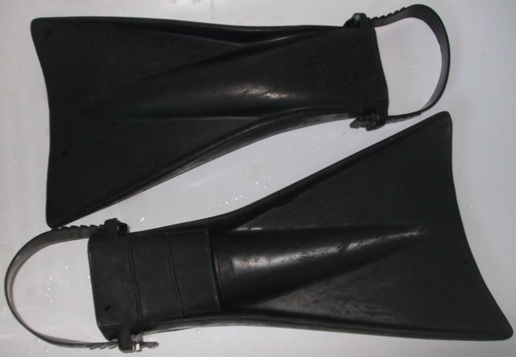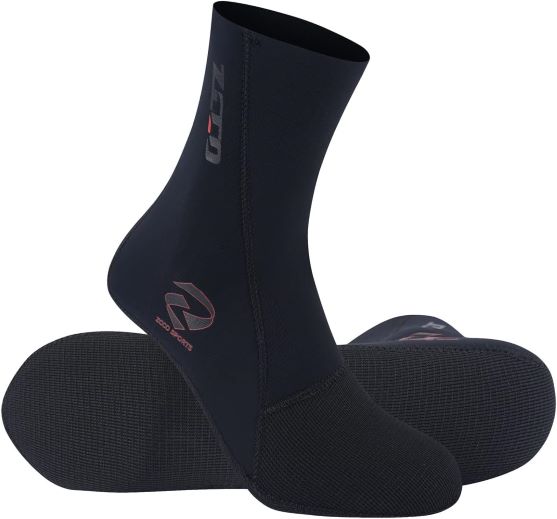Does Swimming with Fins Make Your Legs Stronger? And Other Benefits
When you have learned the basics of swimming and have built up some skills, you will want to increase your swimming speed. That is why you are reading this article on the pros and cons of swimming with fins.
Many people ask: Is it better to swim with or without fins?
Well, that is among the things that we are going to explore in this short article. If you are learning how to swim, the fins might actually help with more than just speed.
It seems that using swimming fins has many advantages. However, it also has some downsides. We shall look at all of those here.
Pros of Swimming with Fins
While they may appear bulky, fins are actually light in weight. Thus, you will not feel their weight on your feet.
When buying your pair of fins, look specifically for Speedo Unisex Adult swimming fins that you can buy on Amazon.com.
Fins activate your leg muscles
This is especially true of the long design fins. Thus, if you swim daily with such fins, your leg muscles will be more toned, and stronger.
The reason why this happens is that the long flippers increase resistance. Thus, you will have to kick harder, which gives you a bigger and better workout.
Another way that these fins help tone your leg muscles is that they keep your legs more elevated in the water. This happens because they have a larger surface area, so they float more easily.
You can swim at higher speed
Swimming with fins might help you when you are practicing for a triathlon or other such event.
It will help to improve your swimming speed so that even when you swim without fins, you still enjoy faster propulsion in the water.
The way that the fins increase your speed is by making your legs and hips float better in the water. Thus, from an elevated position, you only have to concentrate on how fast you can get from point A to B.
Fins make your upkick better
Believe it or not, fins give you a better up-kick. Naturally, we tend to kick downward rather than upward.
Having to kick upwards can be quite a task because your legs are sharper at the toe area, and so they float poorly.
However, when you wear swimming fins, you give your legs more surface area. Thus, they float better and make your up-kick feel easier and faster.
You maintain a better position in the water
Not maintaining a good position on the water when you are swimming can hamper your progress a great deal.
As much as you have learned how to float in deep water, when you are swimming, you will find that your feet have the tendency to dangle downward.
When your feet dangle downward behind you, it hampers your swimming progress, affecting even your swimming speed.
It also affects your up-kick and propulsion. With the best swimming fins for beginners, you can float better from the hips and the legs, almost keeping your body straight on the water.
Cons of Swimming with Fins
Swimming with fins is ultimately better than swimming without fins. That being said, there are still some downsides that you should know about.
You can become too dependent on fins
If you are not keen, you can become too dependent on the swimming fins, such that you do not swim well when you don’t wear them.
Thus, we advise you to specifically use these fins for swimming training alone and even then, not every day that you train.
You need to learn how to hold the water with your limbs rather than using assisting gear such as fins.
You cannot have a powerful kick
You will develop a powerless kick when you use swim training fins too much. The reason for this is that your ankles’ flexibility depends on whether you are wearing your fins or not.
When you are swimming with other people and you cannot wear your fins, you will be left behind.
You might experience blistering
Fins don’t usually cause blisters if you buy the right fit, but there are occasional cases where you might experience such.
Types of fins for swimming
There are two types of swimming fins: long and short. Both have their distinct benefits. The longer fins give you a bigger surface area, so they can help you hold your position in the water very well.

They decrease the work expenditure so that you can swim a longer distance with less work.
On the other hand, short fins are the closest to what you would experience when swimming without fins.
Swimming with fins FAQ
To swim with or without fins? That is the question! Opinion remains divided on this, with some people swearing by them and others against them. Here, we bring you a few frequently asked questions so that you can make up your mind about swim workouts with fins or without.
Does swimming with fins strengthen the legs?
Legs have the largest muscle groups, starting with the glutes, hips, hamstrings, and calves.
When you wear fins for swimming, you give your legs a good workout because the fins add more resistance, thus forcing you to work harder. They also enhance your up-kick.
Should beginner swimmers use fins?
Yes, they should, but it is important to avoid becoming dependent on fins. If you use them too much, you might weaken your ankle workout.
Fins train you to swim better, improve your up-kick technique, and increase your swimming speed tremendously.
Does swimming with fins help?
It helps you to swim with speed and float better thanks to the increase in surface area. If you are a beginner swimmer, the fins will help to bolster your confidence in the water. Fins also help your body stay in position on the water.
How tight should fins be?
They should not be too tight or loose. Fins should fit you snugly so that they do not cause blisters. Blisters develop because of the fin rubbing against your skin.
Why do people wear swim fins?
The main reason for wearing fins is to try to improve their body position in the water and increase their kicking power.
Swim fins also help to improve your up-kick, and they activate most of your leg muscles.
How much easier is swimming with flippers?
When you swim with fins, it is easier by up to 40 percent, which means that you experience less energy expenditure. You can swim longer and harder while spending less energy.
Do you wear socks with fins?
If you notice that your fins are running loose, you can consider wearing special fin socks. If the fins are rubbing against your feet, they will cause blistering. The fin socks that you can buy on amazon.com fit very well inside the fins.
Can you stretch fins?
While most fins are made of flexible materials, you might not be able to stretch them without damaging their structural integrity. That is why you should buy snug-fitting fins so that there is no need to force them to fit you.
Final Thoughts on Pros and Cons of Swimming with Fins
Certainly, there are more pros than cons of swimming with fins. Everyone, beginners as well as advanced swimmers, can use fins.
The key thing is to use them moderately so that you do not become dependent to such an extent that you cannot swim without them.
Also, choose a pair of fins that fits you snugly without pressing your toes too hard and without rubbing on the skin to cause blisters.
Swimming with fins workout is better than when you swim without fins.
You can buy CAPAS Snorkel Fins, Swim Fins Travel Size Short Adjustable for Snorkeling Amazon.com



